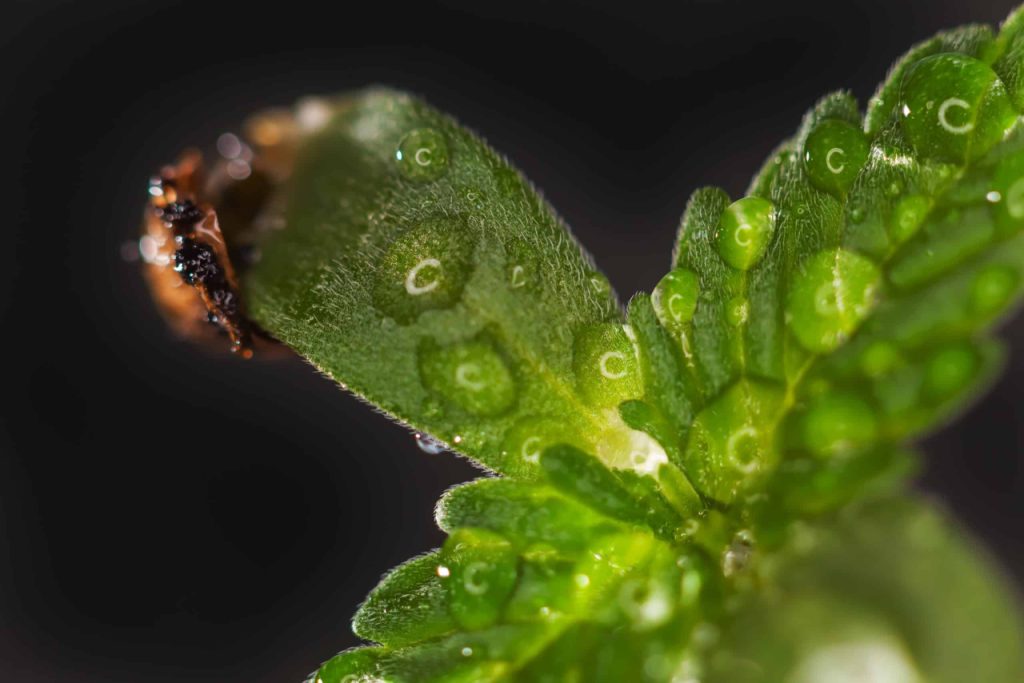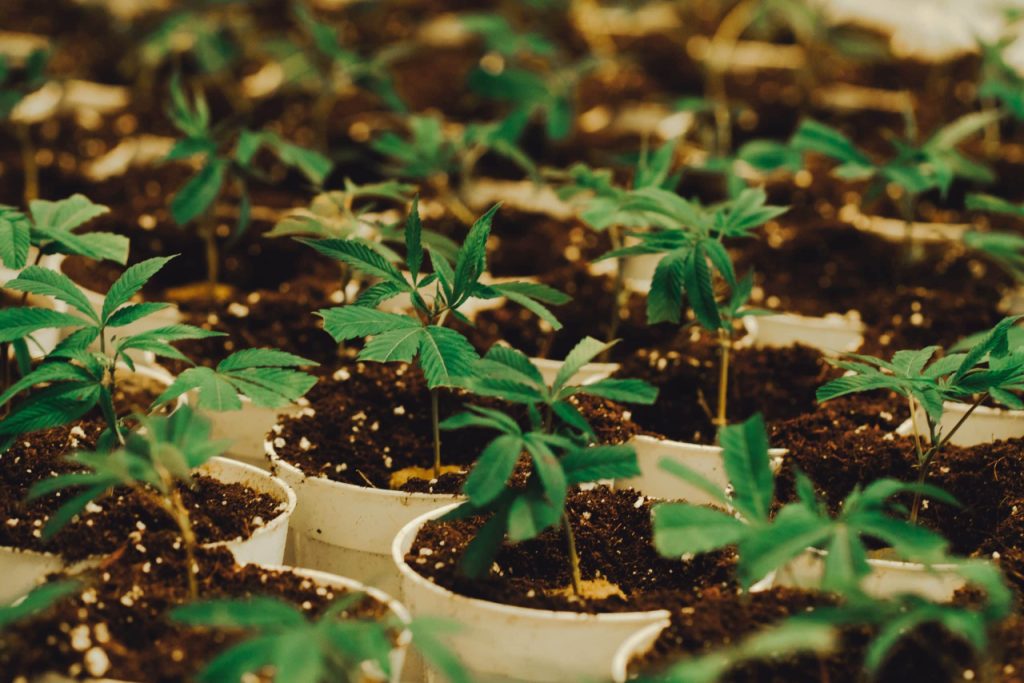Free Tropical Runtz seeds on orders over $150!
Figuring out the best nutrients for autoflower plants can be tough but luckily we have a comprehensive guide here!
Not sure what to feed your autoflowers to obtain the best yield and growth rate or what the optimal autoflower feeding plan is? In this post, I’ll go through the optimum autoflower nutrient feeding regimen for maximizing development throughout the life cycle of your autoflower cannabis plant. Increase your growth rate, productivity, and autoflowering plant quality from seed to harvest.
Do autoflower cannabis plants have different nutritional requirements than photoperiod cannabis plants? Because of their genetics and growth properties, autoflower nutrients are supplied in smaller dosages. Autoflowers contain several self-sustaining characteristics because of the ruderalis genes. Despite their toughness, they nevertheless require nourishment to develop into vigorous crops with abundant harvests. Whether the strain is Indica or Sativa, delivering the appropriate amount of the best autoflower nutrients is critical. Overfeeding or underfeeding your crops generates a cascade of unintended consequences. It’s worth noting that most sold fertilizers are developed for photoperiod cannabis crops. Autoflower plants require fewer nutrients than photographs, so growers must target feeding.
For proper growth, all cannabis plants require micronutrients and trace elements. Autos require significantly fewer nutrients, but you must nute up properly if you want a blossoming yield. Whether you choose the best brand of nutrition for autoflowers or homemade organic feeds, they will require the following nutrients:
The ideal nutrients for autoflowers are available in a variety of forms. Powdered mixtures and those blended with water or soil are popular. Your strain and growing strategy determine the best nutrients for your crops. Regardless, pick between organic and inorganic nutes. Organic nutrients support the growth of an ecosystem in your growing media. It’s a natural approach to improving the environment around cannabis crop roots. Microorganisms break down nutrients so that the plant can readily absorb them. Inorganic (synthetic) autoflower nutrients nourish the plant directly. The roots absorb the exact amount. Nute burn happens when too much is provided. The dietary needs of different strains differ. Follow the growing directions on the cannabis seed box.
Additionally, slow-release autoflower nutrients are offered in the form of pellets or powder. These are slowly released into the growth medium, allowing you plenty of time between feedings. Liquid fertilizers are popular among farmers since they are less expensive and easier to get. The nutritional ratio categorization on the box indicates the amount of each micronutrient in the beverage. It is commonly shown after the nitrogen, phosphorus, and potassium (NPK) acronym. Also, synthetic fertilizers for autoflowers devastate the natural ecology that plants require.
As a general rule, begin feeding your autos while they are in the vegetative stage. This can, however, varies according to the strain and grower. Some gardeners like to wait until their autoflowering strains are seedlings, while others prefer to wait until plants are in flower. A feed schedule is the best method to know when to start feeding your autoflower plant. Several schedules are available, so select one appropriate for your strain and growth circumstances. You should also be wary of the possibility of nutritional burn, so begin with a modest dose and gradually increase as needed.
To maintain the essential nutrient intake at each development stage, use the finest fertilizer for autoflowers. The NPK ratio is represented by digits, which indicate how much of each nutrient is present. 16-16-16 denotes 16% of each element in the sequence nitrogen, phosphorus, and potassium.
To promote plant development, autoflowers require additional nitrogen during the vegging period. Throughout blooming, they need extra potassium and phosphorus for greater bud formation. As a result, it’s critical to get the NPK ratios appropriate at each stage of development. Provide the optimal fertilizer for cannabis at each development stage for soil-based cultivation with these autoflower nutrients:
At this time, autoflower cannabis plants are vulnerable. The roots form new patterns while the two cotyledons meet most of their demands. During the first two weeks, simply watering your crops is generally sufficient. You may feed your plant using potting soil with less phosphorus and nitrogen.

Cannabis seedling boosters with a ratio of 11-40-13 are suitable for providing what the infant cannabis crops require. During this period, they are the ideal nutrients for autoflowers since they support healthy roots and vigorous development.
When cannabis crops are at the vegging stage, their primary purpose is to grow. When you notice rapid development in your auto plants, you’ll know they’re in the vegetative phase. It is critical to feed autoflowers plenty of nitrogen at this time and moderate levels of phosphate and potassium. A macronutrient ratio of 19-5-20 is optimum for growth. It ensures strong root function, increased nutrient uptake, and increased microbial activity. Secondary micronutrients are often accessible in marketed fertilizer, which vehicles also require.
Since autoflower cannabis plants enter their blooming stage without the assistance of artificial light, the pistils must be noted. When they become apparent, you’ll know your crops are in the pre-flowering stage. Phosphorus is the most critical autoflower nutrient once the pre-flowers develop. They require nutes that are half vegging and half blossoming.
When the plants reach the full blooming stage, they reduce vegetative nutrients and feed bud formation. The macronutrients 16-6-30 are great for fattening the buds and expanding the colas.
Autoflowering plants are an excellent choice for farmers looking to enhance output. These plants have a shorter life cycle and require less care than standard cannabis strains. However, autoflowers need adequate feeding to attain their full potential. Here are some suggestions for feeding your autoflowers:
Choosing the best nutrients for autoflowers in soil is easier as it is probably the most standard way to grow cannabis. The types of nutrients you choose for autos in soil depends largely on the type of soil you’re using.

The essential nutrients for autoflowers in soil are:
Bear in mind that these are the essentials, the absolute minimum and you will likely require more nutrients.
Whether you’re growing autos in organic soil or regular soil it’s important to use nutrients to match the soil while also paying attention to the different grow stages.
Nutrients for autoflowers in coco are essential. While it’s likely you will mix coco coir with perlite and/or soil potentially, the nutrient needs will be slightly different.

You must pay attention to grow stages and specific plant needs, however, in general the best nutrients for autoflowers in coco are:
Looking for strategies to cultivate more flavorful and fragrant crops? Reduce the likelihood of deficits by using organic nutrition for your autos. Aside from the numerous advantages for your plants, they are environmentally responsible for cultivating cannabis.
These seedling boosters are the greatest organic nutrients for autoflowers. The main goal of growing at this stage is to promote good root development while not overpowering the cannabis. The Organic Seedling Booster promotes robust root development and growth.
Autoflowers perform best when macro and micronutrients are harmonized. It is critical to provide the optimal nutrients for autoflowers throughout vegetation. The crops begin to stretch and demand assistance from their nutrient intake.
When your autos start flowering on their own, it’s time to increase bud output. Using the organic flower time fertilizer, choose the optimal organic nutrients for autoflower. Your autoflowering cannabis plants will receive the necessary nutrients to fatten those buds with an NPK ratio of 6-2-12. As soon as the first blossoms develop, start applying this fertilizer.
The organic plant booster, which is great for fast-growing autoflowering plants, goes a long way. These autoflower nutrients offer nutritional content to support stronger development and bigger colas with plumper buds. With an NPK ratio of 0-13-15, this plant booster allows autos to retain nitrogen, build roots, and stimulate blooming.
Just because autoflowers are ecologically friendly doesn’t imply they don’t benefit from autoflower nutrients. Their ruderalis genes let them thrive under harsh environments, but they still require sustenance to reap a good crop. All cannabis plants need a balanced intake of macro and micronutrients to thrive. Because autos have a shorter growth cycle, they require lower dosages. Because autoflowering cannabis crops develop differently than photoperiods, their feeding habits also change. To avoid over- or under-feeding your plants, follow the nutrition schedule for autoflowers organic or synthetic feeds. Remember to verify the NPK ratios on the package of nutrients carefully. Use the best organic nutrients for autoflowers for the greatest outcomes.
An all-green, ecologically friendly feeding system for bigger, better, and tastier harvests.When feeding your cannabis plants, try not to overfeed or underfeed them. Overfeeding can result in a nutrient burn, which is difficult for autoflowering plants to recover from because of their shorter life cycle than pictures. (If you get nutrient burn, you may assist your plants in recovery by flushing them with plain water.) However, underfeeding might lead to a poor crop.
You should also ensure that your growth medium has the proper pH so your plants can absorb the nutrients. The ideal pH for cannabis development varies based on the growing medium, ranging from 6.0 to 7.0 in the soil to 5.5 to 6.5 in hydroponics.





Offers
This product is not for use by or sale to persons under the age of 18. This product should be used only as directed on the label. It should not be used if you are pregnant or nursing. Consult with a physician before use if you have a serious medical condition or use prescription medications. A doctor’s advice should be sought before using any hemp products. All trademarks and copyrights are property of their respective owners and not affiliated with nor do they endorse this product. These statements have not been evaluated by the FDA. This product is not intended to diagnose, treat, cure or prevent any disease. By using this site you agree to follow the Privacy Policy and all Terms & Conditions printed on this site. All products contain less than 0.3% Cannabinoid-compliant with applicable Federal Laws. Please make yourself aware of any and all applicable laws regarding hemp in your jurisdiction. Premium Cultivars accepts no liability or responsibility regarding germination laws in any specific locale state or national jurisdictions.THCA products are not available for shipment to the following states: Hawaii, Idaho, Minnesota, Oregon, Rhode Island, Utah, Vermont *Note: Products with Total THC content above 0.3% must not be shipped to these states.
We want to help you get your hands on the seeds you want, take 20% off your next purchase when you enter your email below!
We want to help you get your hands on the seeds you want, take 20% off your next purchase when you enter your email below!